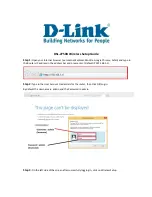
9
Regulatory Domains
The 1550 series supports the following regulatory domains (shown as “
x
” in the model numbers):
•
-A
FCC/North America, including Canada, Mexico, and some South American countries
•
-C
China, Indonesia, Malaysia, Egypt
•
-E
ETSI and many European, Middle Eastern, and African countries (EMEA)
•
-K Korea
•
-M
Kuwait and Saudi Arabia
•
-N
Non-FCC, including Australia, New Zealand, Hong Kong, India, Brazil, Panama, and
Mexico
•
-Q
Japan (5.47-5.725GHz channels)
•
-R
Russia
•
-S Singapore
•
-T Taiwan
For the latest details and accurate listing of country homologation, refer to “Table 3. 802.11abgn
Mesh Access Points” on the Wireless-LAN-Compliance-Status page at:
http://www.cisco.com/en/US/prod/collateral/wireless/ps5679/ps5861/product_data_sheet0900aecd80
537b6a.html#wp9005628
5
Becoming Familiar With the Access Point
The following illustrations show identify the access point connections. Before you begin the
installation process, use these illustrations to familiarize yourself with the access point.
Note
The illustrations show all available connections for the configuration ordered. Unused
connections are capped to ensure the watertight integrity of the access point. Liquid tight
connectors are provided for all ports, which can be installed prior to or after deploying the
access point.
Figure 1
and
Figure 3
shows the access point bottom and side connectors for models
AIR-CAP1552E-x-K9, AIR-CAP1552EU-x-K9, and AIR-CAP1552H-x-K9.
Figure 2
and
Figure 6
show the access point top connectors for AIR-CAP1552EU-x-K9 and AIR-CAP1552CU-x-K9.
Figure 4
and
Figure 5
show the access point bottom and side connectors for models
AIR-CAP1552I-x-K9, AIR-CAP1552C-x-K9, and AIR-CAP1552CU-x-K9.
Figure 7
shows the RF
splitter components for models AIR-CAP1552C-x-K9 and AIR-CAP1552CU-x-K9.
Figure 8
shows the
access point right side connectors for all models.
Summary of Contents for Aironet 1550 Series
Page 58: ...58 ...










































